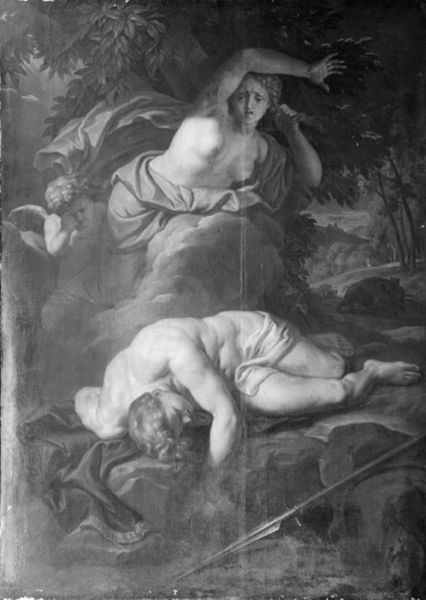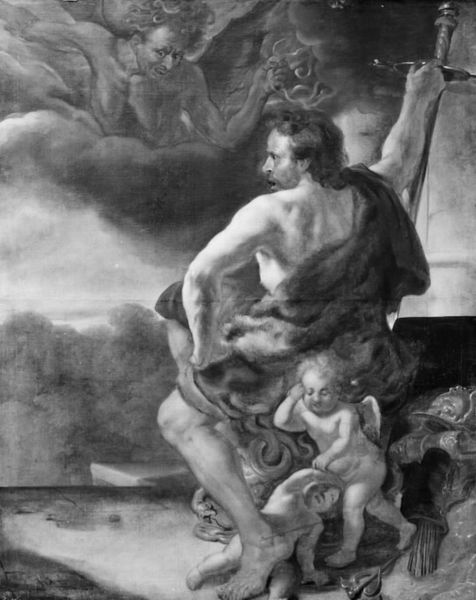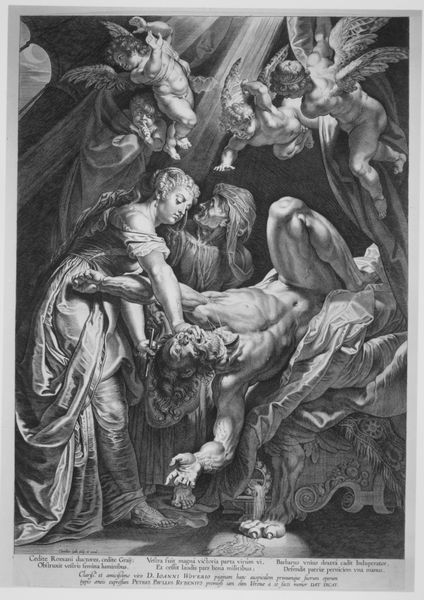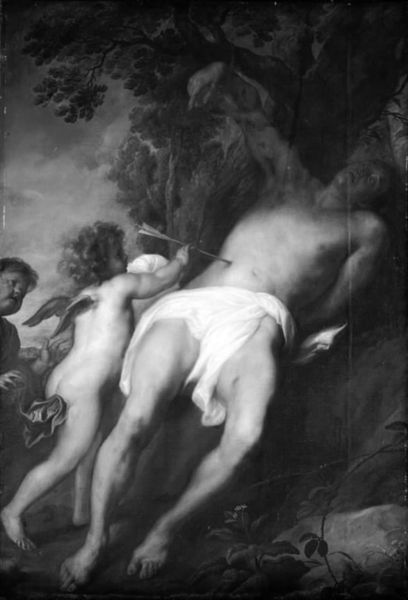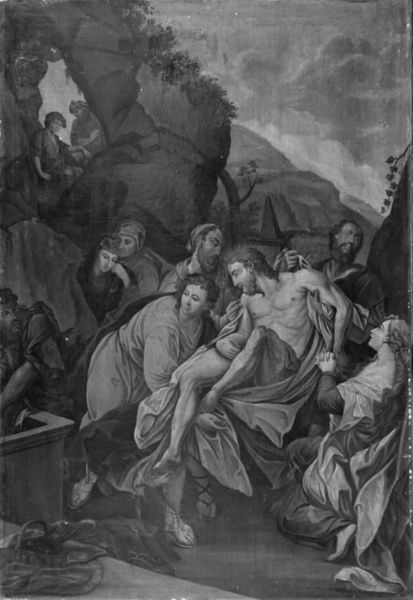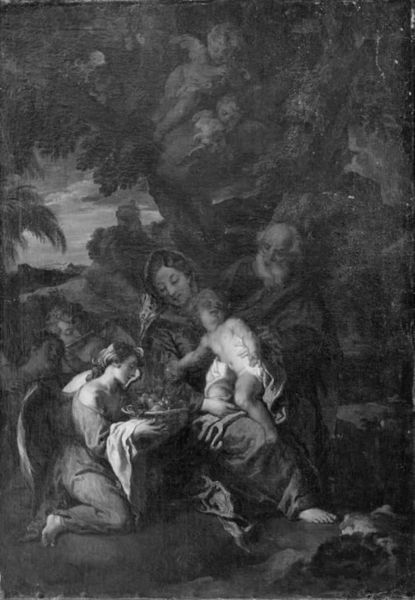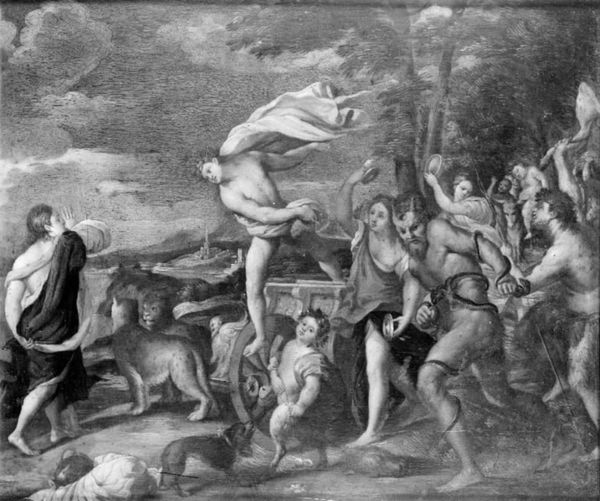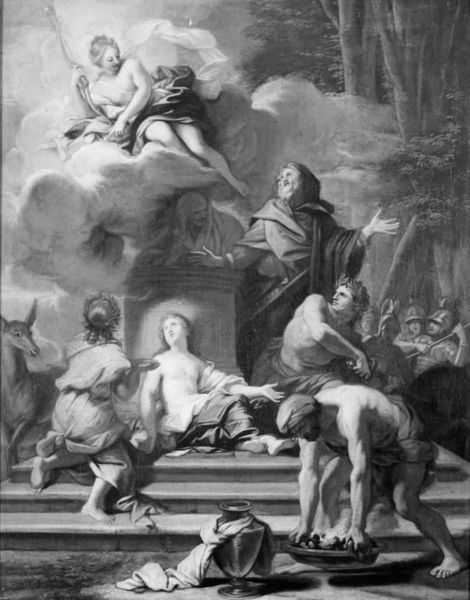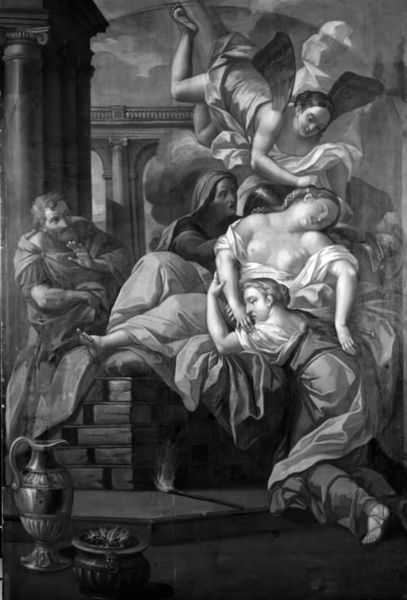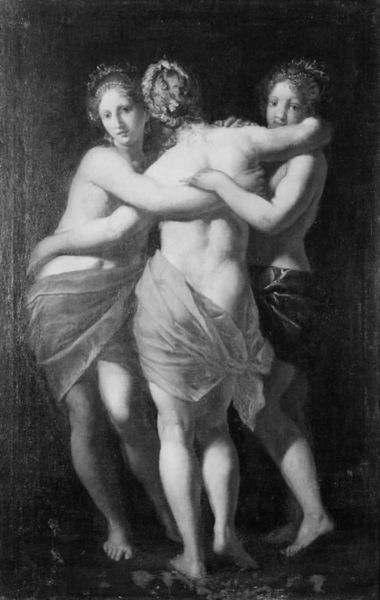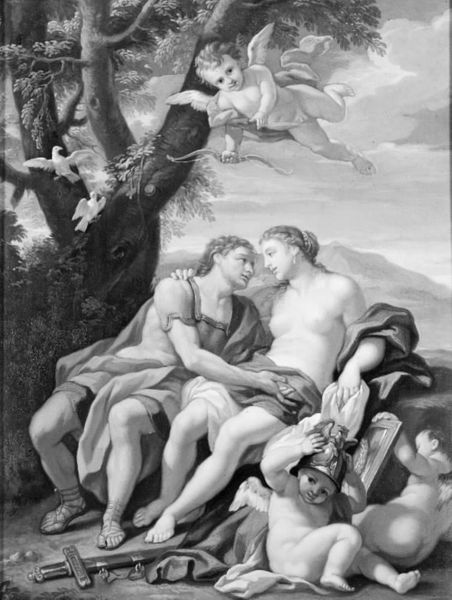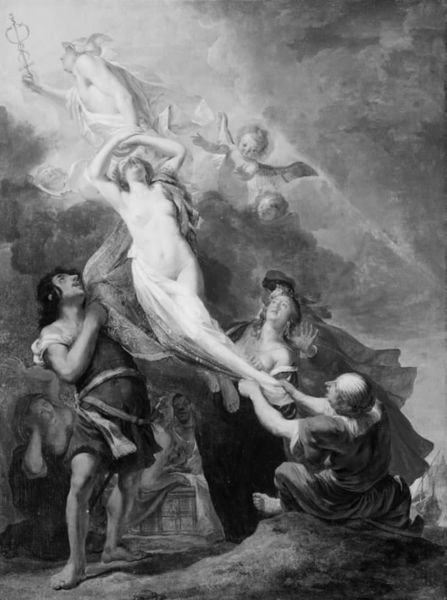
painting, canvas
#
baroque
#
painting
#
figuration
#
canvas
#
black and white
#
history-painting
#
monochrome
#
monochrome
Dimensions: 133 cm (height) x 97 cm (width) (Netto)
Editor: Here we have Magnus Berg’s monochrome canvas, "Saint Lawrence," which he worked on from 1681 to 1739. It's striking how stark the scene is, almost brutal in its depiction of violence. What stands out to you when you look at this piece? Curator: As a materialist, I see a painting that tells us a lot about the economic and social forces at play during its creation. Notice the canvas itself – its weave, its texture. The very acquisition of materials like this canvas, the pigments used to create this monochrome effect – these reflect specific trade routes and artistic economies of the period. What can we infer about Berg’s access to these resources? Editor: That's a perspective I hadn't considered. It makes me wonder about the labour involved, not just Berg's, but everyone involved in producing the materials themselves. Curator: Precisely! Consider the social context: History paintings were often commissioned. Who would have commissioned this piece, and why? Saint Lawrence was, after all, a martyr. Editor: Perhaps it was for a church, to inspire faith, or maybe to remind people of the consequences of defying authority? Curator: Exactly. And notice the execution. The visible brushstrokes and gradations tell us a great deal about Berg’s technique. It speaks to his individual skill but also his place within the workshop system. Was this his own design entirely, or part of a larger commission, dictating what and how he painted? And to what extent does the use of monochrome, as a visual simplification, relate to efficient production in the face of labor costs? Editor: Thinking about it that way, it opens up so many new avenues for understanding the artwork beyond just its religious theme. I had initially overlooked these aspects. Curator: Indeed. By analyzing the materials, production, and consumption surrounding "Saint Lawrence," we gain insights into the Baroque period’s art world and broader societal structures. It's about recognizing art not as divine inspiration but as a product of labor, materiality, and its historical moment.
Comments
No comments
Be the first to comment and join the conversation on the ultimate creative platform.
